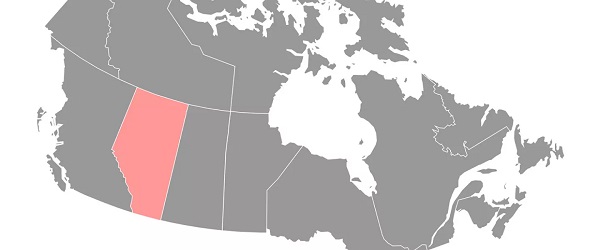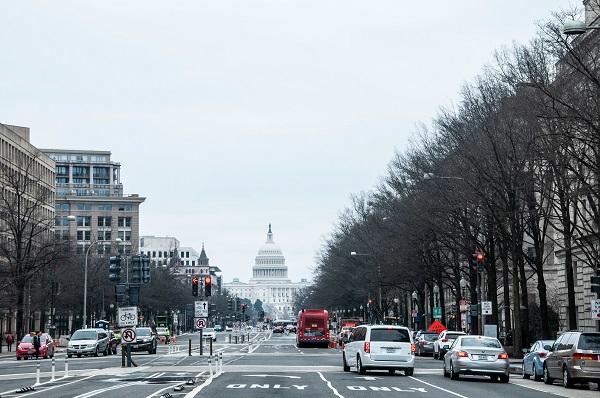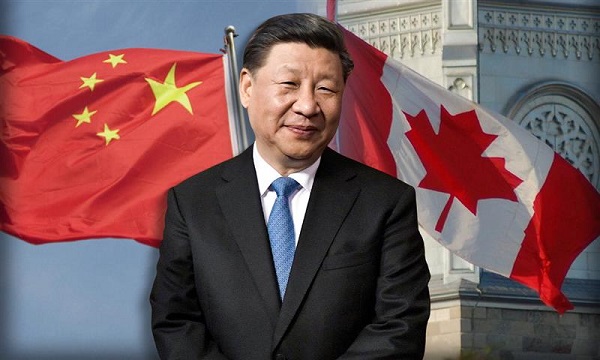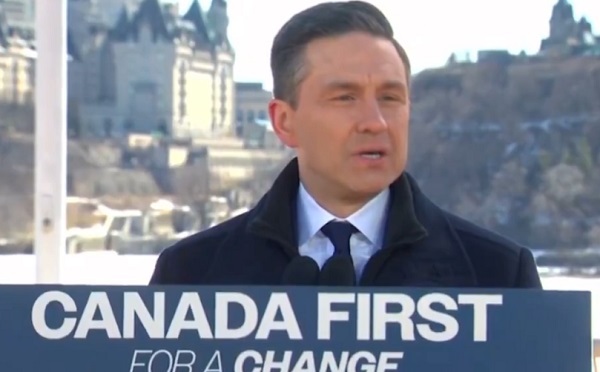Alberta
Alberta, Canadian federal gov’ts face lawsuits filed over ‘harm’ caused by COVID shots

From LifeSiteNews
A law firm representing Albertans alleges in its filing that the vaccines were ‘deceptively’ promoted.
A law firm filed a class action lawsuit against the Alberta provincial government and the federal government on behalf of Albertans who were “harmed by the Covid-19 vaccines.”
“This legal action is centered around allegations of unlawful, negligent, inadequate, improper, unfair, and deceptive practices by the Defendants in relation to the warning, marketing, promotion, and distribution of the Covid Vaccines,” Alberta-based Rath & Company stated in a February 29 press release regarding the lawsuit, which was filed in the Court of King’s Bench in Lethbridge, Alberta.
“This proposed class action lawsuit seeks justice for individuals who have suffered physical and psychological injuries or death due to the alleged negligence and misconduct by the Defendants in respect of the Covid Vaccines. It aims to hold the Defendants accountable and obtain compensation for those adversely affected.”
According to the law firm, the lawsuit was filed individually last year by COVID jab-harmed Alberta resident Carrie Sakamoto, who is listed as the “class representative for the proposed class action lawsuit.” She sustained “severe, permanent physical and emotional injuries” from the COVID shots.
“The lawsuit claims that the Defendants (Alberta and Federal governments) were negligent, provided information they knew to be false and incomplete, and that they censored and suppressed truthful and reliable information about vaccine injuries thereby vitiating informed consent and causing harm to Ms. Sakamoto and many others in Alberta,” the Rath & Company press release noted.
“The lawsuit goes on to allege misfeasance in public office and conspiracy to commit assault and battery on the public.”
The remedies sought by the plaintiff include “general damages in an amount to be proven at trial” as well as “special and punitive damages in an amount to be proven at trial.”
Lead counsel Jeffrey Rath predicted that Canadians will be “shocked to learn about the rushed changes to safety standard for the Covid Vaccines which removed the requirement for the Covid Vaccines to be either ‘safe or effective’ while, at the same time, the Defendants promoted, distributed, and marketed the Covid Vaccines as ‘safe and effective’ to the public.”
Rath added that the federal and Alberta governments “didn’t stop there” when it came to the COVID shots, as “they went further by coercion the public to take the Covid Vaccines by stripping rights from them or providing financial incentives for taking the Covid Vaccines.”
“What does that do for informed consent? Does this amount to a conspiracy to commit assault and battery on the public? These are questions that we are asking the court to determine. And, I think, the public deserves some answers,” Rath said.
The COVID shots were heavily promoted by the federal government as well as all provincial governments in Canada, with the Alberta government under former Premier Jason Kenney being no exception.
The mRNA shots themselves have been linked to a multitude of negative and often severe side effects in children.
According to co-counsel Eva Chipiuk, the Defendants “held themselves out as public health experts and gave medical advice to the public at large,” but they “intentionally set out to build a relationship of trust between themselves and the public during the pandemic at a time when they knew the public was vulnerable and afraid.”
“They knew or ought to have known that the public would be relying on their information for their health, safety and protection,” she mentioned.
Under Kenney, Albertans were heavily coerced into taking the COVID shots through a mass marketing campaign and later a COVID jab passport. Many in the public and private sectors who did not get the jabs lost their jobs.
Danielle Smith took over from Kenney as leader of the United Conservative Party (UCP) on October 11, 2022, after winning the leadership. Kenney was ousted due to low approval ratings and for reneging on promises not to lock Alberta down as well as enacting a vaccine passport.
Under Kenney, those who did not comply with jab mandates such as thousands of nurses, doctors, and other healthcare and government workers lost their jobs for choosing to not get the jabs, leading Smith to say – only minutes after being sworn in – that over the past year the “unvaccinated” were the “most discriminated against” group of people in her lifetime.
Adverse effects from the first round of COVID shots have resulted in a growing number of Canadians filing for financial compensation over injuries from the jabs via the federal Vaccine Injury Program (VISP).
VISP has already paid well over $11 million to those injured by COVID injections.
Earlier this year, LifeSiteNews reported on how officials from Health Canada have admitted that there is “residual plasmid DNA” in the COVID shots after a Conservative MP asked the agency through an official information request if the DNA fragments were in the shots.
The jabs also have connections to cell lines derived from aborted babies. As a result of this, many Catholics and other Christians refused to take them.
Lawsuit open to All COVID jab ‘impacted individuals in Alberta’
The Rath & Company class action lawsuit is open to all impacted “individuals in Alberta” who have been “injured or otherwise adversely affected by the Covid Vaccines.”
Those wanting to join the class action can click here.
Rath & Company noted that should the court grant permission for this action to proceed as a “Class Action” (also known as “Certification”), those involved “may qualify as a class member whether or not you have registered.”
“Millions of Canadians relied on the representations of the Defendants at a time when they were particularly vulnerable. We now know that many Canadians suffered physical and psychological injuries due to the misinformation and negligence of the Defendants,” Rath & Company stated.
This is the second large class action prepared by Rath & Company in recent weeks concerning COVID jabs and mandates in Alberta.
Last month, LifeSiteNews reported that a law firm is in the process of putting together a class-action lawsuit against the Alberta government on behalf of many business owners in the province who faced massive losses or permanent closures from what it says were “illegal” COVID public health orders enacted by provincial officials.
COVID vaccine mandates, which came from provincial governments with the support of Trudeau’s federal government, split Canadian society.
Despite the health risks associated with the COVID shots, governments across Canada all enacted strict rules, including workplace jab mandates.
Under Kenney, thousands of businesses, notably restaurants and small shops, were negatively impacted by severe COVID restrictions, mostly in 2020-21, that forced them to close for a time. Many never reopened. At the same time, as in the rest of Canada, big box stores were allowed to operate unimpeded.
The Rath & Company class action is just one of many that have been filed by Canadians who chose not to get the shots, then lost their job, and want to fight back.
Late last year, LifeSiteNews reported that over 700 vaccine-free Canadians negatively affected by federal COVID jab dictates banded together to file a multimillion-dollar class-action lawsuit against the federal government of Trudeau.
2025 Federal Election
Next federal government should recognize Alberta’s important role in the federation

From the Fraser Institute
By Tegan Hill
With the tariff war continuing and the federal election underway, Canadians should understand what the last federal government seemingly did not—a strong Alberta makes for a stronger Canada.
And yet, current federal policies disproportionately and negatively impact the province. The list includes Bill C-69 (which imposes complex, uncertain and onerous review requirements on major energy projects), Bill C-48 (which bans large oil tankers off British Columbia’s northern coast and limits access to Asian markets), an arbitrary cap on oil and gas emissions, numerous other “net-zero” targets, and so on.
Meanwhile, Albertans contribute significantly more to federal revenues and national programs than they receive back in spending on transfers and programs including the Canada Pension Plan (CPP) because Alberta has relatively high rates of employment, higher average incomes and a younger population.
For instance, since 1976 Alberta’s employment rate (the number of employed people as a share of the population 15 years of age and over) has averaged 67.4 per cent compared to 59.7 per cent in the rest of Canada, and annual market income (including employment and investment income) has exceeded that in the other provinces by $10,918 (on average).
As a result, Alberta’s total net contribution to federal finances (total federal taxes and payments paid by Albertans minus federal money spent or transferred to Albertans) was $244.6 billion from 2007 to 2022—more than five times as much as the net contribution from British Columbians or Ontarians. That’s a massive outsized contribution given Alberta’s population, which is smaller than B.C. and much smaller than Ontario.
Albertans’ net contribution to the CPP is particularly significant. From 1981 to 2022, Alberta workers contributed 14.4 per cent (on average) of total CPP payments paid to retirees in Canada while retirees in the province received only 10.0 per cent of the payments. Albertans made a cumulative net contribution to the CPP (the difference between total CPP contributions made by Albertans and CPP benefits paid to retirees in Alberta) of $53.6 billion over the period—approximately six times greater than the net contribution of B.C., the only other net contributing province to the CPP. Indeed, only two of the nine provinces that participate in the CPP contribute more in payroll taxes to the program than their residents receive back in benefits.
So what would happen if Alberta withdrew from the CPP?
For starters, the basic CPP contribution rate of 9.9 per cent (typically deducted from our paycheques) for Canadians outside Alberta (excluding Quebec) would have to increase for the program to remain sustainable. For a new standalone plan in Alberta, the rate would likely be lower, with estimates ranging from 5.85 per cent to 8.2 per cent. In other words, based on these estimates, if Alberta withdrew from the CPP, Alberta workers could receive the same retirement benefits but at a lower cost (i.e. lower payroll tax) than other Canadians while the payroll tax would have to increase for the rest of the country while the benefits remained the same.
Finally, despite any claims to the contrary, according to Statistics Canada, Alberta’s demographic advantage, which fuels its outsized contribution to the CPP, will only widen in the years ahead. Alberta will likely maintain relatively high employment rates and continue to welcome workers from across Canada and around the world. And considering Alberta recorded the highest average inflation-adjusted economic growth in Canada since 1981, with Albertans’ inflation-adjusted market income exceeding the average of the other provinces every year since 1971, Albertans will likely continue to pay an outsized portion for the CPP. Of course, the idea for Alberta to withdraw from the CPP and create its own provincial plan isn’t new. In 2001, several notable public figures, including Stephen Harper, wrote the famous Alberta “firewall” letter suggesting the province should take control of its future after being marginalized by the federal government.
The next federal government—whoever that may be—should understand Alberta’s crucial role in the federation. For a stronger Canada, especially during uncertain times, Ottawa should support a strong Alberta including its energy industry.
Alberta
Province announces plans for nine new ‘urgent care centres’ – redirecting 200,000 hospital visits

Expanding urgent care across Alberta
If passed, Budget 2025 includes $17 million in planning funds to support the development of urgent care facilities across the province.
As Alberta’s population grows, so does the demand for health care. In response, the government is making significant investments to ensure every Albertan has access to high-quality care close to home. Currently, more than 35 per cent of emergency department visits are for non-life-threatening conditions that could be treated at urgent care centres. By expanding these centres, Alberta’s government is enhancing the health care system and improving access to timely care.
If passed, Budget 2025 includes $15 million to support plans for eight new urgent care centres and an additional $2 million in planning funds for an integrated primary and urgent care facility in Airdrie. These investments will help redirect up to 200,000 lower-acuity emergency department visits annually, freeing up capacity for life-threatening cases, reducing wait times and improving access to care for Albertans.
“More people are choosing to call Alberta home, which is why we are taking action to build capacity across the health care system. Urgent care centres help bridge the gap between primary care and emergency departments, providing timely care for non-life-threatening conditions.”
“Our team at Infrastructure is fully committed to leading the important task of planning these eight new urgent care facilities across the province. Investments into facilities like these help strengthen our communities by alleviating strains on emergency departments and enhance access to care. I am looking forward to the important work ahead.”
The locations for the eight new urgent care centres were selected based on current and projected increases in demand for lower-acuity care at emergency departments. The new facilities will be in west Edmonton, south Edmonton, Westview (Stony Plain/Spruce Grove), east Calgary, Lethbridge, Medicine Hat, Cold Lake and Fort McMurray.
“Too many Albertans, especially those living in rural communities, are travelling significant distances to receive care. Advancing plans for new urgent care centres will build capacity across the health care system.”
“Additional urgent care centres across Alberta will give Albertans more options for accessing the right level of care when it’s needed. This is a necessary and substantial investment that will eventually ease some of the pressures on our emergency departments.”
The remaining $2 million will support planning for One Health Airdrie’s integrated primary and urgent care facility. The operating model, approved last fall, will see One Health Airdrie as the primary care operator, while urgent care services will be publicly funded and operated by a provider selected through a competitive process.
“Our new Airdrie facility, offering integrated primary and urgent care, will provide same-day access to approximately 30,000 primary care patients and increase urgent care capacity by around 200 per cent, benefiting the entire community and surrounding areas. We are very excited.”
Alberta’s government will continue to make smart, strategic investments in health facilities to support the delivery of publicly funded health programs and services to ensure Albertans have access to the care they need, when and where they need it.
Budget 2025 is meeting the challenge faced by Alberta with continued investments in education and health, lower taxes for families and a focus on the economy.
Quick facts
- The $2 million in planning funds for One Health Airdrie are part of a total $24-million investment to advance planning on several health capital initiatives across the province through Budget 2025.
- Alberta’s population is growing, and visits to emergency departments are projected to increase by 27 per cent by 2038.
- Last year, Alberta’s government provided $8.4 million for renovations to the existing Airdrie Community Health Centre.
Related information
-

 2025 Federal Election2 days ago
2025 Federal Election2 days ago2025 Federal Election Interference from China! Carney Pressed to Remove Liberal MP Over CCP Bounty Remark
-

 Uncategorized1 day ago
Uncategorized1 day agoPoilievre on 2025 Election Interference – Carney sill hasn’t fired Liberal MP in Chinese election interference scandal
-

 Media2 days ago
Media2 days agoTop Five Huge Stories the Media Buried This Week
-

 Censorship Industrial Complex1 day ago
Censorship Industrial Complex1 day agoWelcome to Britain, Where Critical WhatsApp Messages Are a Police Matter
-

 International2 days ago
International2 days agoTrump signs executive order to make Washington D.C. “safe and beautiful”
-

 Business2 days ago
Business2 days agoCuba has lost 24% of it’s population to emigration in the last 4 years
-

 2025 Federal Election2 days ago
2025 Federal Election2 days ago2025 Election Interference – CCP Bounty on Conservative Candidate – Carney Says Nothing
-

 2025 Federal Election15 hours ago
2025 Federal Election15 hours agoPoilievre To Create ‘Canada First’ National Energy Corridor








